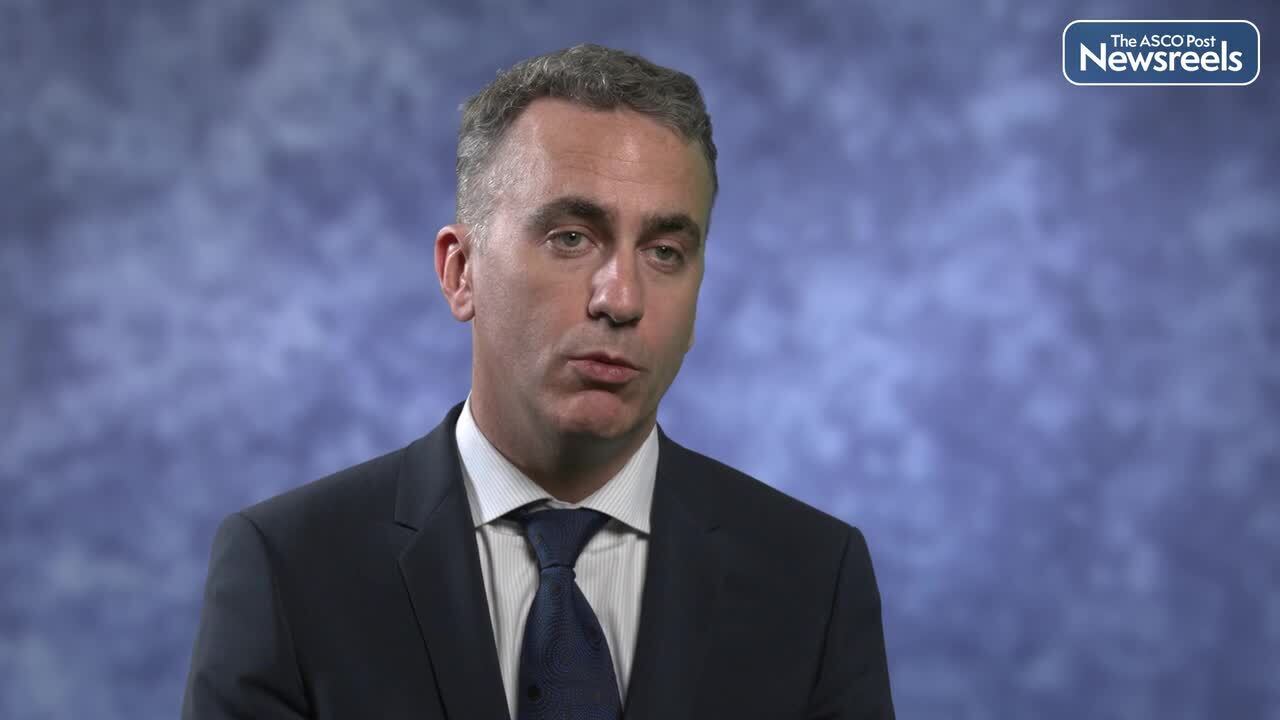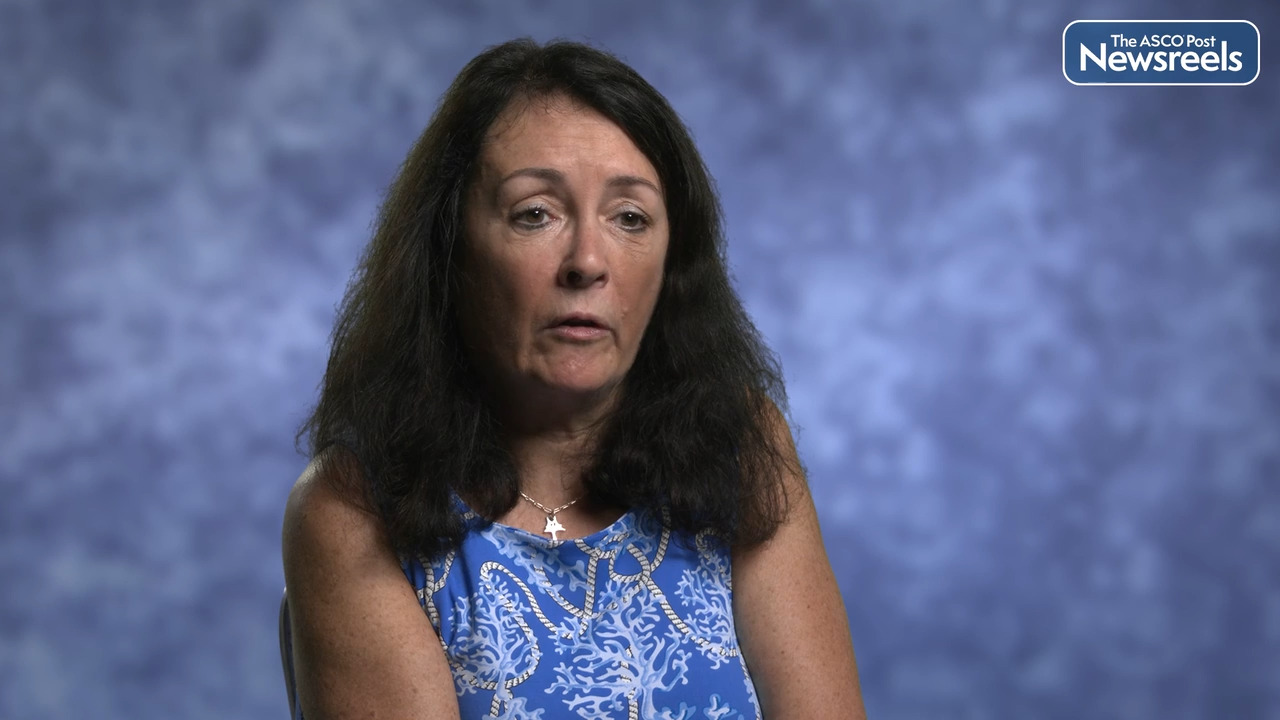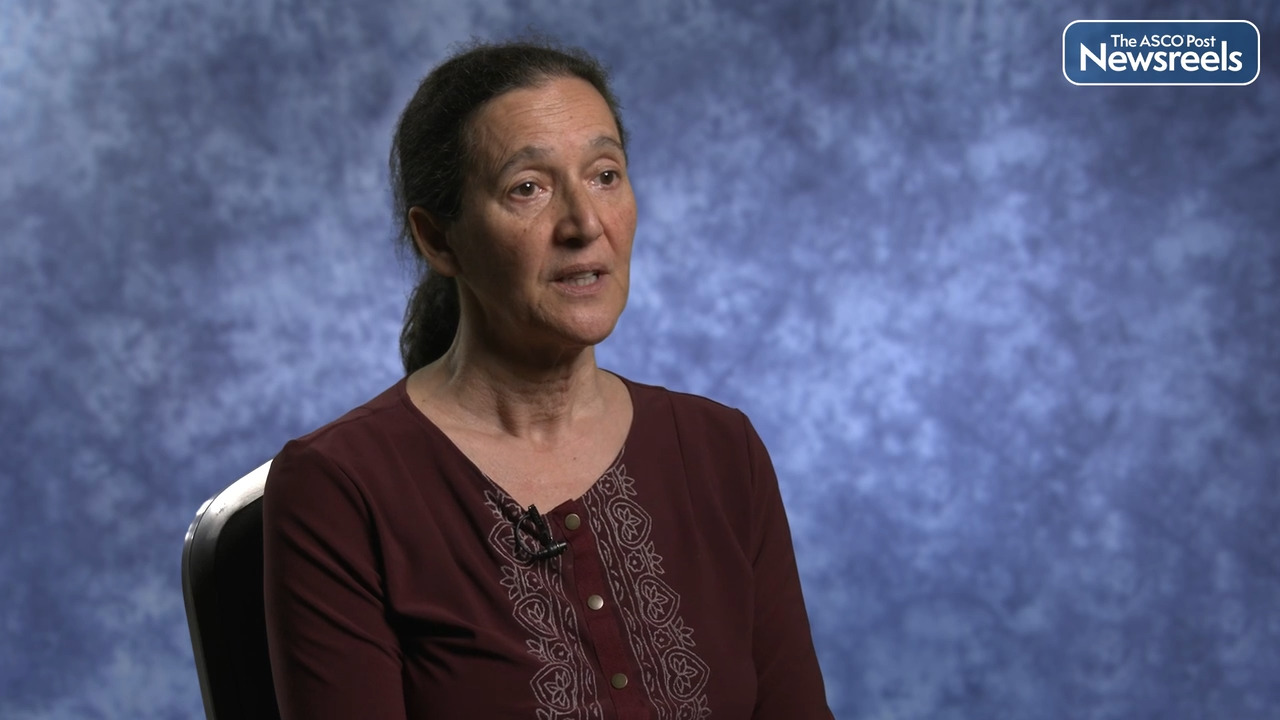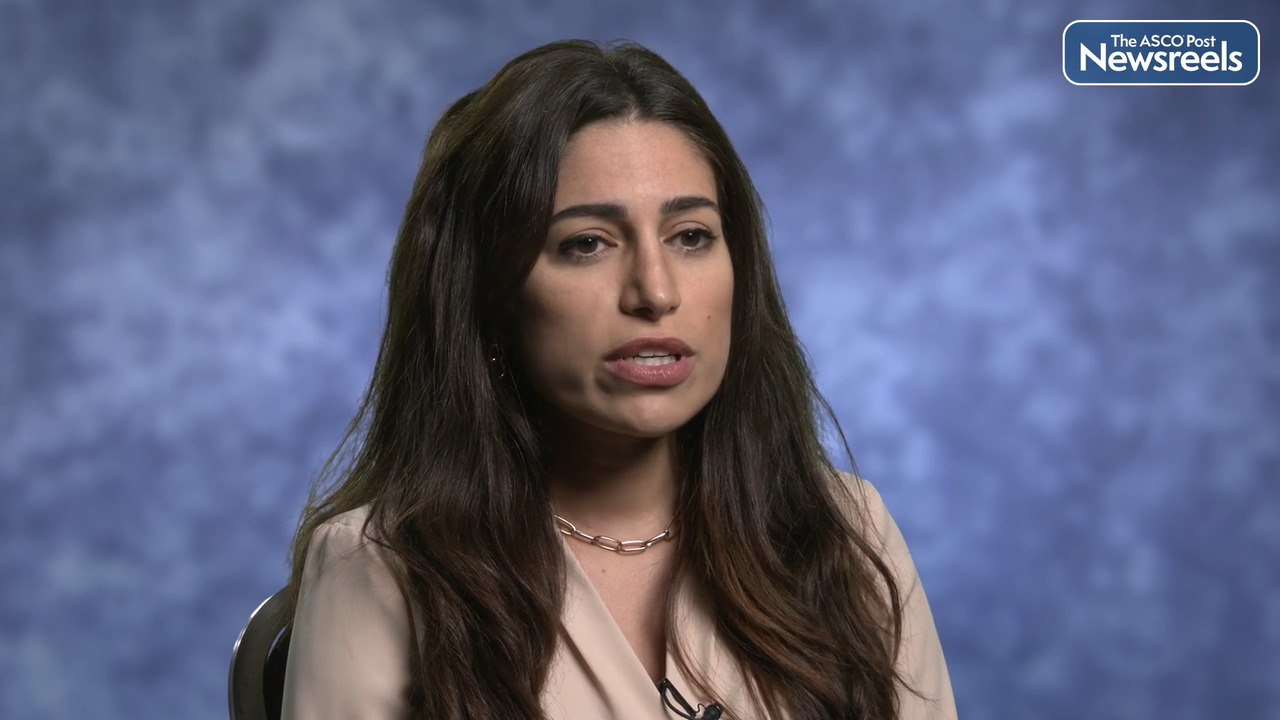Nicholas C. Turner, MD, PhD, on New Data on Capivasertib and Fulvestrant for Advanced Breast Cancer
2022 San Antonio Breast Cancer Symposium
Nicholas C. Turner, MD, PhD, of London’s Institute of Cancer Research and The Royal Marsden, discusses phase III results from the CAPItello-291 clinical trial, which showed that in patients with hormone receptor–positive, HER2-negative tumors resistant to aromatase inhibitors, adding the investigational AKT inhibitor capivasertib to fulvestrant doubled the median progression-free survival compared with placebo plus fulvestrant (Abstract GS3-04).
Transcript
Disclaimer: This video transcript has not been proofread or edited and may contain errors.
AKT inhibition is common in advanced hormone receptor positive HER2 negative breast cancers. The CAPitello 291 study investigated the AKT inhibitor, capivasertib. The study recruited patients with advanced hormone receptor positive HER2 negative breast cancer that had progressed on prior aromatase inhibitor. The study allowed up to two prior lines of endocrine therapy and one prior line of chemotherapy for advanced breast cancer, and also allowed prior CDK4/6 inhibitor, mandating 51% of patients to have had a prior CDK4/6 inhibitor at least.
708 patients were recruited, randomized one to one between fulvestrant and placebo and fulvestrant and capivasertib. There were two co-primary endpoints. Investigator assessed PPFs overall and in AKT pathway activated cancers. AKT pathway activated cancers were defined as the presence of PIC3CA, AKT1, or P10 mutations in the cancer, which was determined in tissue, which was submitted after randomization and analyzed with the FoundationOne assay.
Overall, 41% of tumors had AKT pathway activating alterations. Overall, median PFS improved from 3.6 months on fulvestrant and placebo to 7.2 months on capivasertib and fulvestrant. A hazard ratio of 0.6, highly statistically significant.
Then in the co-primary endpoint of AKT pathway activated cancers, PFS improved from 3.1 months on placebo to 7.2 months on capivasertib. A hazard ratio of 0.5. Again, highly statistically significant.
If we come to adverse effects, overall capivasertib was well tolerated with a manageable safety profile. 13% of patients stopped due to adverse effects. The most prominent adverse effect was diarrhea, which occurred in 72% of patients, predominantly grade one diarrhea, although 9% of patients had grade three diarrhea. Rash also occurred in 38% of patients, 12% grade three, but prominently both hypoglycemia and stomatitis were relatively uncommon, grade three and only 2% of patients each.
Overall the CAPitello 291 study showed a statistically significant and clinically meaningful improvement in progression-free survival, both overall and in AKT pathway activated cancers. The benefit was consistent across subgroups including in patients with prior CDK46 inhibitor use. Currently, overall survival data is immature and ongoing follow-up is going on for two further formal analyses of overall survival.
In conclusion, it is hopeful that capivasertib will be a future treatment option for the population of patients who were recruited in the study.
Related Videos
The ASCO Post Staff
François-Clément Bidard, MD, PhD, of the Institut Curie, discusses overall survival results from the STIC CTC trial. To guide the choice between chemotherapy and endocrine therapy for patients with metastatic, estrogen receptor–positive/HER2-negative breast cancer, researchers compared circulating tumor cell (CTC) count to physician’s choice of treatment. The data suggest that the CTC count resulted in better long-term outcomes (Abstract GS3-09).
The ASCO Post Staff
Ruth O’Regan, MD, of the University of Rochester Medical Center, discusses the Breast Cancer Index (BCI), a genomic assay that can assess the risk of late distant recurrence (5–10 years after diagnosis) of hormone receptor–positive, early-stage breast cancer. Among premenopausal women with this disease who were enrolled in the SOFT trial, those with a high BCI score had an increased risk of distant recurrence. Those with a low BCI score benefited more from the addition of ovarian suppression therapy to endocrine therapy after 12 years of follow-up (Abstract GS1-06).
The ASCO Post Staff
Prudence A. Francis, MD, of the Peter MacCallum Cancer Centre, discusses an update of the SOFT trial, which showed that adding ovarian function suppression (OFS) to adjuvant tamoxifen for premenopausal women with estrogen receptor (ER)-positive breast cancer reduces the risk of recurrence. OFS enables the use of adjuvant aromatase inhibitors as an alternative to tamoxifen, which can further reduce recurrence of ER-positive, HER2-negative disease. Very young women—those younger than 35 years old—should be considered for OFS, according to Dr. Francis. In addition, tamoxifen alone is appropriate in women with low-risk clinical-pathologic features.
The ASCO Post Staff
Sara A. Hurvitz, MD, of the University of California, Los Angeles, Jonsson Comprehensive Cancer Center, discusses phase III findings from the DESTINY-Breast03 study, which showed that second-line treatment with fam-trastuzumab deruxtecan-nxki (T-DXd) led to longer overall survival compared with ado-trastuzumab emtansine (T-DM1) in patients with HER2-positive metastatic breast cancer. Patients treated with T-DXd had a 36% lower risk of death than those treated with T-DM1 (Abstract GS2-02).
The ASCO Post Staff
Yara Abdou, MD, of the University of North Carolina, discusses results from the RxPONDER SWOG S1007 study, which showed that non-Hispanic Black women with hormone receptor–positive/HER2-negative breast cancer with one to three involved lymph nodes and a recurrence score of ≤ 25 have worse outcomes than non-Hispanic White women. In addition, Black patients were more likely to accept treatment assignment than their White counterparts and were just as likely to remain on estrogen therapy at 6 and 12 months, suggesting that outcome differences may be less likely attributable to lack of treatment compliance within the first year (Abstract GS1-01 ).





